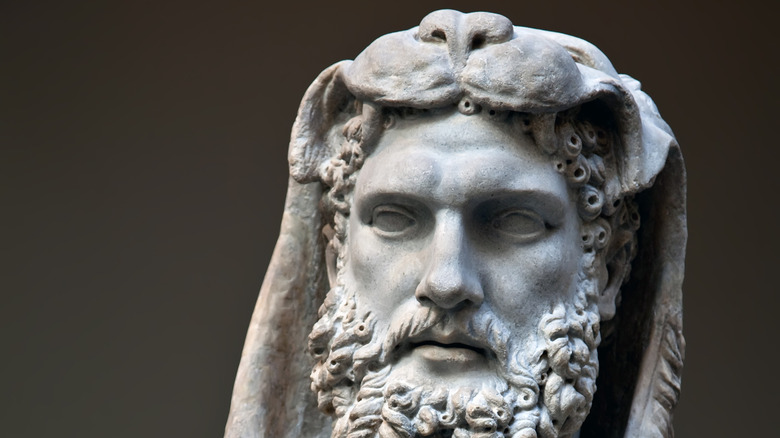The Mythology Behind The Leo Constellation Explained
Leo — literally, Latin for "lion" — is the constellation on the ecliptic between Cancer and Virgo, according to Britannica, and is the sign of the zodiac for people born between July 23 and August 22. Leo, the clusters of stars that appear in the Northern Hemisphere sky around the time of the spring equinox, is one of the oldest constellations, and its identification predates Classical Greece (via Space) — ancient Mesopotamians, Turks, Persians, Syrians, Jews, and Indians all also referred to the constellation as a lion, according to Space.
Today, however, the most well-known mythological origin for the constellation comes from the Greek story of Heracles, later known to the Romans as Hercules (via Britannica). This hero, the son of Zeus and a mortal woman, was forced by his half-brother Eurystheus to endure the storied "twelve labors" — the first of which was the slaying of a fearsome lion that terrorized the city of Nemea.
A lion whom mortal weapons could not kill
Legend says that Zeus's wife, Hera, despised Heracles as the product of her husband's philandering, according to Britannica. Because of this, Hera sent Heracles a fit of madness that caused him to murder his wife and children. As punishment, Eurystheus, Heracles's half-brother and king, gave Heracles his twelve labors.
The first of these trials was to kill the Nemean lion, which had a hide impervious to any weapon of metal, stone, or wood Heracles threw at it, according to Globe at Night. Heracles eventually found another way to kill the lion — wrestling it to the ground and strangling it with his bare hands. From then on, Heracles used the hide as his impenetrable armor, and the rest of the lion was put in the sky as the constellation Leo.
There is another Greek story tied to the constellation of Leo, according to Globe at Night. In the tale, the lovers Pyramus and Thisbe arranged to meet each other by a tree with white mulberries. Thisbe arrived first and was startled by the appearance of a lion, bloody from his hunt. As she ran away, her veil fell off, causing the lion to pounce on it. When Pyramus arrived, all he saw was Thisbe's bloody veil, and so, believing his beloved to be dead, he stabbed himself. When Thisbe returned to the mulberry tree and saw what Pyramus had done, she, too, killed herself. This is why mulberries are red, and possibly why there is a lion in the sky.

